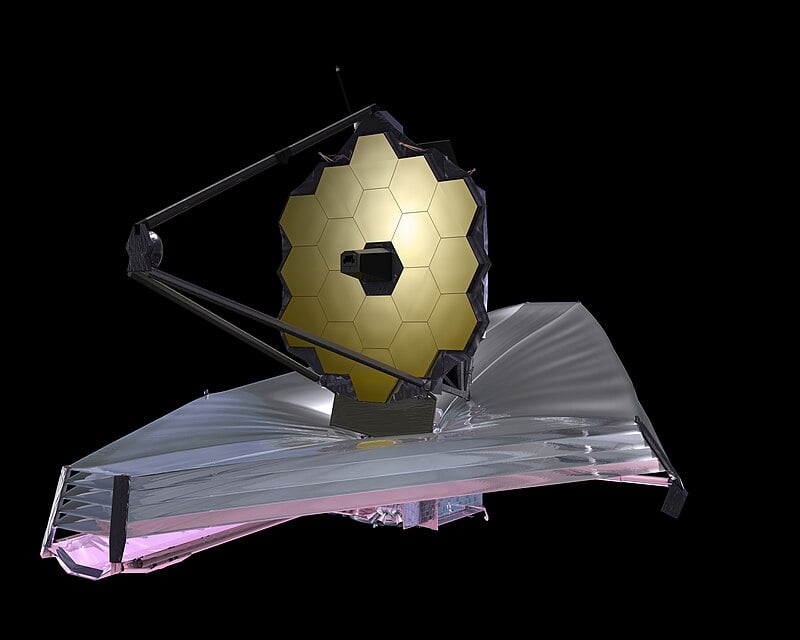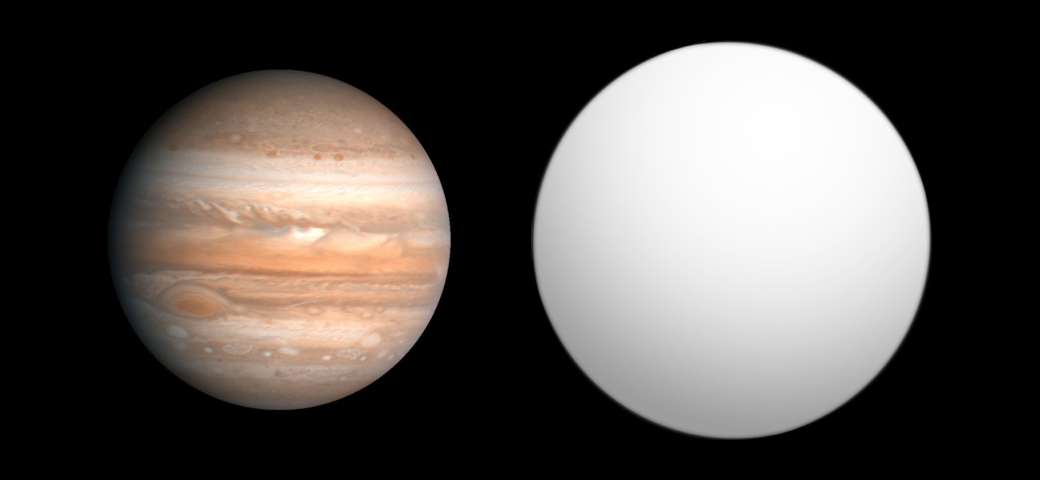For decades, astronomers have studied Jupiter’s Great Red Spot and swirling cloud bands through increasingly powerful telescopes, building a detailed understanding of our giant neighbor’s dynamic atmosphere. Now, for the first time, scientists have created a three-dimensional map of a planet orbiting a distant star, a breakthrough that promises to transform how we study worlds beyond our Solar System.
The target was WASP-18b, an “ultra-hot Jupiter” located 400 light years from Earth. This gas giant packs roughly ten times Jupiter’s mass into a scorching orbit that takes just 23 hours to complete. With temperatures approaching 5,000 degrees, it’s hot enough to break down water vapor molecules in its atmosphere and now it’s been mapped exactly where those extreme conditions exist in three dimensions.
 Exoplanet WASP-18b − high carbon monoxide levels have been detected in its stratosphere (Credit : NASA/GSFC)
Exoplanet WASP-18b − high carbon monoxide levels have been detected in its stratosphere (Credit : NASA/GSFC)
The achievement relied on a technique called spectroscopic eclipse mapping, applied for the first time using data from the James Webb Space Telescope. The concept is elegant but extraordinarily challenging. As WASP-18b moves behind its host star, different parts of the planet disappear and reappear from view. By measuring minute changes in brightness during these eclipses, tiny fractions of the already faint planetary light, which itself emits less than one percent of the star’s brightness, scientists can link specific regions to observed light variations.
The real innovation comes from observing these eclipses in multiple wavelengths simultaneously. Different colors probe different atmospheric layers because molecules absorb light at specific wavelengths. Water vapor, for instance, strongly absorbs certain infrared colors but allows others to pass through unimpeded. By building brightness maps at multiple wavelengths and converting them to temperatures, the team could construct a three-dimensional portrait spanning latitude, longitude, and altitude.
The resulting map revealed spectroscopically distinct regions across WASP-18b’s dayside, the hemisphere permanently facing its star due to tidal locking. These zones differ dramatically in temperature and possibly in chemical composition, confirming that even planets too distant to image directly have complex, varied atmospheres worth studying in detail.
 The James Webb Space Telescope (Credut : NASA)
The James Webb Space Telescope (Credut : NASA)
This technique opens whole new world of possibilities. Hot Jupiters like WASP-18b make up hundreds of the more than 6,000 confirmed exoplanets, and many are observable by JWST with sufficient brightness for eclipse mapping. Rather than treating distant worlds as featureless dots, astronomers can now begin understanding them as dynamic, three-dimensional environments mapping atmospheric features much as we’ve long mapped Jupiter’s storms.
Additional JWST observations could improve the spatial resolution of these maps, while applying the technique to other hot Jupiters will reveal atmospheric diversity across this entire class of planets. What began as a proof of concept study of one extreme world may soon evolve into a comprehensive survey, finally bringing exoplanets into focus as real places with geography, weather patterns, and atmospheric structure we can actually observe and understand.
Source : Now in 3D, maps begin to bring exoplanets into focus

